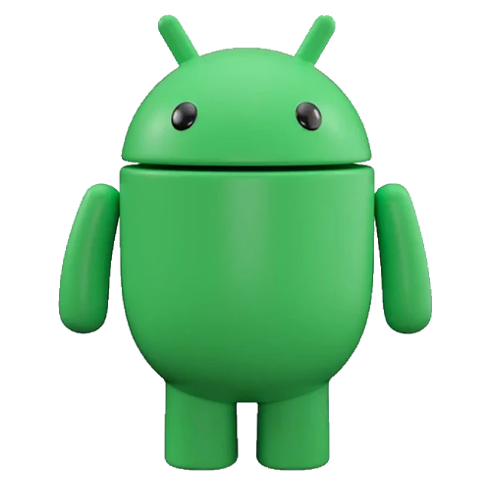Android 4.0 Ice Cream Sandwich is a version of Android that was previewed at the May 2011 Google I/O event, and officially launched at the Galaxy Nexus and Ice Cream Sandwich release event on 19 October 2011. Its predecessor version was Android 3.2 Honeycomb, and its successor was Android 4.1 Jelly Bean. However, the predecessor version of Android for phones was Android 2.3 Gingerbread, as Honeycomb was a tablet-only release. Google's Gabe Cohen stated that Ice Cream Sandwich was "theoretically compatible" with any Android 2.3.x (Gingerbread) device.[1] The source code for ICS became available on 14 November 2011, three days before the Galaxy Nexus was released. Android 4.0 latest release on June 6 2012 as android 4.0.4. Android 4.0 support ended on February 2 2019.
Phones That Support Android 4.0 / 4.0.4[]
Sony / Sony Ericsson[]
- Xperia U *update*
- Xperia Neo *update*
- Xperia Active *update*
- Xperia Mini *update*
- Xperia Mini Pro *update*
- Xperia Arc S *update*
- Xperia P *update*
- Xperia S *update*
- Xperia miro
- Xperia V
- Xperia J
- Xperia T
- Xperia TX
- Xperia SL
- Xperia Go *update*
- Xperia Live With Walkman *update*
- Xperia Sola *update*
- Xperia Tipo
- Xperia Ray *update*
- Xperia Pro *update*
- Xperia Neo V *update*
- Xperia Play *cancelled*
Samsung[]
- Galaxy S III
- Galaxy S II *update*
- Galaxy S Advance *cancelled*
- Galaxy Note *update*
- Galaxy Tab 2 7.0/10.1
- Galaxy Tab 7.0+/7.7/8.9/10.1
- Galaxy Nexus
- Galaxy R
- Galaxy Pocket Plus
- Galaxy S Duos
- Galaxy Music
LG[]
- Optimus 4X
- Optimus 2X *update*
- Optimus L7
- Optimus L5
- Optimus L9
- Optimus Vu
- Optimus 3D Cube/Max *upgrade*
New Features and Changes[]
- Enhanced speed and performance
- Separation of widgets in a new tab, listed in a similar manner to apps
- Easier-to-create folders, with a drag-and-drop style[2]
- Improved visual voicemail with the ability to speed up or slow down voicemail messages[citation needed]
- Pinch-to-zoom functionality in the calendar
- Offline search, a two-line preview, and new action bar at the bottom of the Gmail app
- Ability to swipe left or right to switch between Gmail conversations
- Integrated screenshot capture (accomplished by holding down the Power and Volume-Down buttons)
- Improved error correction on the keyboard[2]
- Ability to access apps directly from lock screen (similar to HTC Sense 3.x)
- Improved copy and paste functionality
- Better voice integration and continuous, real-time speech to text dictation
- Face Unlock, a feature that allows users to unlock handsets using facial recognition software
- New tabbed web browser, allowing up to 16 tabs
- Automatic syncing of browser with users' Chrome bookmarks
- Modern Roboto font[2]
- Data Usage section in settings that lets users set warnings when they approach a certain usage limit, and disable data use when the limit is exceeded[2]
- Ability to shut down apps that are using data in the background
- Improved camera app with zero shutter lag, time lapse settings, panorama mode, and the ability to zoom while recording
- Built-in photo editor
- New gallery layout, organized by location and person
- Refreshed "People" app with social network integration, status updates and hi-res images[2]
- Android Beam, a near-field communication feature allowing the rapid short-range exchange of web bookmarks, contact info, directions, YouTube videos and other data[2]
- Hardware acceleration of the UI
- Resizeable widgets – already part of Android 3.1 for tablets, but new for cellphones[2]
- Wi-Fi Direct
- 1080p video recording for stock Android devices
4.0.1[]
The SDK for Android 4.0.1 was publicly released on 19 October 2011. It fixed minor bugs on the Galaxy Nexus.
4.0.2[]
The Android 4.0.2 update was released on 28 November 2011, and fixed minor bugs on the Verizon Galaxy Nexus, the launch of which was later delayed.
4.0.3[]
- Numerous bug fixes and optimizations
- Improvements to graphics, databases, spell-checking and Bluetooth functionality
- New APIs for developers, including a social stream API in the Contacts provider
- Calendar provider enhancements
- New camera applications enhancing video stabilization and QVGA resolution
- Accessibility refinements such as improved content access for screen readers
4.0.4[]
- Stability improvements
- Better camera performance
- Smoother screen rotation
- Improved phone number recognition
Gallery[]
References[]
- ↑ Stevens, Tim. "Google confirms Nexus S will get Ice Cream Sandwich – for real this time (Gingerbread devices, too)". Engadget. Published on October 19, 2011. Web. As of December 20, 2014. http://www.engadget.com/2011/10/19/google-confirms-nexus-s-will-get-ice-cream-sandwich-for-real/.
- ↑ 2.0 2.1 2.2 2.3 2.4 2.5 2.6 "Android, A visual history." The Verge. Published 7 December 2011. Web. As of 10 December 2014. http://www.theverge.com/2011/12/7/2585779/android-history.


